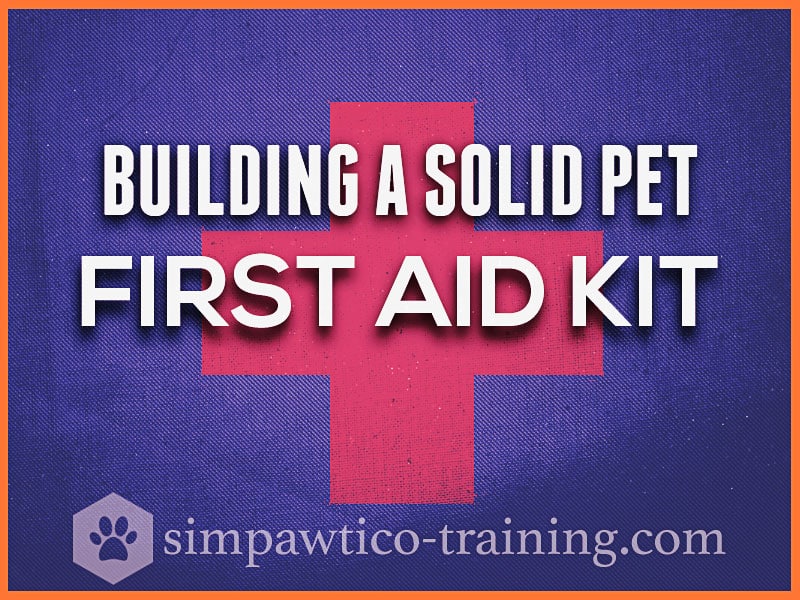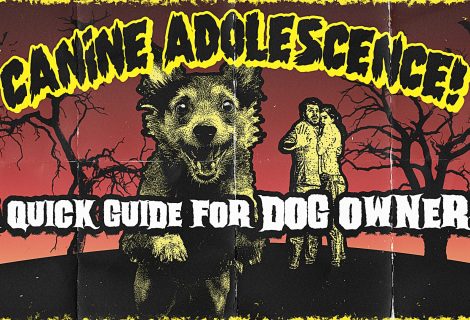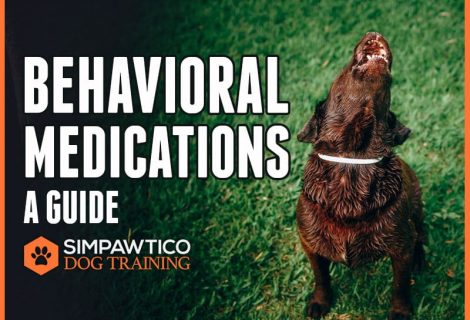Pet First Aid Kit – What to Put in It
This post contains affiliate links. These won’t cost you anything, but the commissions we may earn through them help offset the cost of stocking our first aid kits. Thanks for your support!
Whether you’re going out for a day trip, or hitting the road for a long ride, a good first aid kit is an important thing to carry with you. Accidents of all kinds can happen at any time. As the Boy Scouts always say, “Be prepared!” This implies that you are always in a state of readiness in mind and body.
Statistically, most accidents that lead to a pet’s death are predictable and preventable (just like training problems).
According to the American Animal Hospital Association one out of four additional animals could be saved if just one pet first aid technique was applied.
If you’ve ever clipped a nail too short, you’ve done first aid. If you’ve ever removed a tick or treated a bite or a sting, you’ve done first aid. As pet owners or pet professionals, we’ve done our share of minor little boo-boo fixes.
But what if you saw a dog get hit by a car, or come out the loser in a fight, or have a seizure, or get bit by a rattlesnake…do you know what to do? Do you know what to do if your dog stops breathing, or loses consciousness? What about heatstroke, or frostbite, or poisoning? What about choking, or burns? These are possible scenarios you could encounter.
BE PREPARED!
I highly recommend that you purchase or assemble a pet first aid kit. Making your own is the best approach. You’ll really know it front to back that way. A pre-purchased one is convenient, but it’ll never be as good, I think. If you do buy one that’s pre-made, take it all apart, familiarize yourself with the components, and then supplement the parts to fill in the gaps where it falls short.
The beauty of a robust First Aid Kit is that it’s useful for humans AND pets. If you build yourself a good, sensible kit, it’ll be a heavy-duty multitasker. You’ll be able to tackle problems for yourself, your human companions, and your furry family too.
BARE ESSENTIALS
Here’s a list of the bare minimum that should be in your kit. If you don’t take anything else, take these. Product links are affiliate links.
- 3% Hydrogen Peroxide — use this to induce vomiting. It’s only good for six months after you open it before it just turns into water, so replace open bottles regularly
- Scissors — get the blunt tip kind. Use this for cutting straps, collars, leashes, and even sweaters and coats.
- Rectal thermometer — digital ones are the easiest and most accurate. Include a small travel-sized petroleum jelly tube to lubricate it. If you’re building for humans too, get a second one. Once a rectal thermometer, always a rectal thermometer!
- Tweezers
- Adhesive tape
- Gauze pads
- Gauze rolls
- Triangular bandage
- Triple antibiotic ointment — Neosporin, Polysporin, or a similar generic brand. You can order little, single-use blister packs on Amazon.
- Activated charcoal — use it absorb poisons in the stomach.
- Antihistamine — Benadryl (or the generic name, diphenhydramine HCL). Dosage is 1-2mg per pound of body weight, and it’s best to get the liquigel caps, pierce it with a safety pin (that you also carry in your kit) and squirt it down their throat. This will work faster than a regular pill which can take up to a half hour to start working.
EXTENDED KIT
If you’re putting together a more beastly kit, here are the pieces to supplement the above list.
- Alcohol wipes — a staple of First Aid Kits. Use them to sterilize surfaces, wounds, gear, etc.
- Cotton swabs — Q-tips® of course are the most well-known, but any generic brand will do.
- Muzzle — any animal can bite if it’s in pain. Muzzling is for your safety and theirs. An emergency muzzle can be made from a strap of fabric or strapping and learning to tie one will also mean you don’t have to put a whole set of all sizes in your kit.
- Popsicle sticks and/or paint stirrers — great for immobilizing limbs
- Needlenose pliers — used to retrieve things stuck in the throat
- Flashlight — good to have if it’s nighttime, or otherwise hard to see the problem. A headlamp may be a good alternative.
- Latex or Nitrile Gloves
- Chemical ice pack
- Tick Key — the Tick Key is my favorite tick remover, but whatever kind you prefer I recommend carrying something to remove ticks with you.
BONUS PIECES
These final bits aren’t absolutely necessary but are good to have if you like building a mondo kit (like me!).
- Betadine solution — better than old-school, straight iodine. This is a powerful topical disinfectant.
- Constricting band — my favorite is the R.A.T.S. Tourniquet. Don’t use it if you haven’t been trained! If you have not been trained, there may be someone present who has been and they can deploy it.
- Sanitary napkins — or as they’re usually called, “Panty liners.” These are designed to absorb a ton of liquid and would make a great base bandage you could then wrap with gauze or a triangular bandage.
- Blanket — help to treat shock (keep warm), or as a transport stretcher.
- Extra leash and collar — Always good to have a backup! I personally keep several sets in my car.
- Poo baggies — hey, these aren’t just for the poops; they’re for collecting items that the pet was choking on, or (if possible) samples of things ingested to then take to the vet. Put a sharpie in your kit too so you can write down what, when, and how.
- Vinegar or baking soda — this one’s probably not one you’ll use much (hopefully) but it’s great for neutralizing chemical burns.
- Syringe (no needle) — use it to squirt hydrogen peroxide down your pet’s gullet to induce vomiting (see above). If you’re going out on an excursion or trip, you could actually pre-load syringes with the correct doses so they’re ready to go.
- Pill gun — great for putting a pill down the pet’s throat in an emergency; no time to fiddle with Pill Pockets or rolls of cheese.
- Picture ID — a photo of you and your pet will shut down any ownership confusion in a hurry. You could print this out to put in the kit, or keep this in your smart phone. Incidentally, it would also be good to have with a Master Travel Document like we talked about in our Traveling with Pets post.
WHERE TO BUY
First Aid Kits are pretty ubiquitous. Every department store like Target or WalMart sells them. Outdoor stores have tons to choose from. And even pet stores are starting to carry the Kurgo pet kit. Any of these might be a good place to get a base kit to start with.
Beyond that, individual pieces can be bought on Amazon, of course. But don’t forget dollar stores, either. You can load up on a ton of supplies on the cheap at dollar stores and discount stores. These, in my opinion, are better than drugstores like CVS or Rite Aid because the drugstores tend to be more expensive.
Everything on this list will fit in a medium-sized pouch. There are lots of great pouches out there. Your container doesn’t even have to be for first aid. It is recommended to have some identifying marks on it, though, to make it easy for everyone to find.
If you buy a store-bought kit and add to it, most of these have room to put more in. I’ve got some little kits I bought and I have stuffed the hell out of them with more stuff.
Best bet: shop around, make a list, and stick to your list.
GET TRAINED!
For more info on what to else to put in your kit and how to use everything for bleeding management, treating shock, poisoning, seizures, bites and stings, choking, burns, hypothermia, hyperthermia, and a whole host of other things, find yourself a class, and get trained.
Recently Simpawtico Dog Training started offering regular pet CPR, first aid, and care classes. Our PetSaver™ class will train you in all of the methods and strategies to deal with issues ranging from minor boo-boos to full-blown emergencies.
If you’re in the twin tiers area of upstate New York, join one of our regular PetSaver™ classes! Or GO HERE to find a Pet Tech class in your area.
ADDITIONAL RESOURCES
Watch our fun travel vlog on YouTube about getting the Pet Tech instructor certification.
Visit Pet Tech to learn more about Pet First Aid & CPR Training. Also GO HERE to find a Pet Tech class in your area:
FREE pet safety kit from the ASPCA.
Extensive pet first aid kits at Outdoor Safety.
More kits and supplies at CPR-Savers.
DIY pet first aid kit list from the Humane Society.









